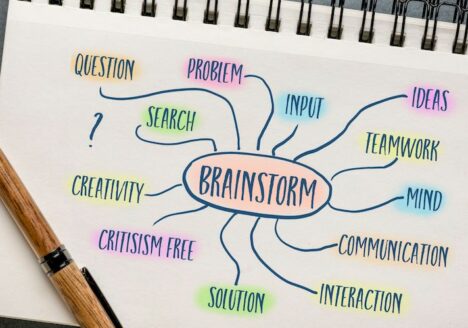The Reticular Activating System (RAS) is a critical neural network located in the brainstem that plays a pivotal role in regulating wakefulness, attention, and the filtering of sensory information. Understanding the RAS is essential for gaining insights into how we perceive our environment, make decisions, and maintain focus. This article delves into the significance of the RAS, how it interacts with other neural systems, and its profound impact on our cognitive and behavioral processes.
The Function of the Reticular Activating System
The RAS is composed of interconnected neurons that extend from the medulla to the midbrain, influencing the thalamus and cortex. It acts as a gateway, controlling the flow of sensory input to the conscious mind. The RAS determines what information is attended to and what is ignored, thus playing a central role in attention, arousal, and consciousness (Llinás & Paré, 1991).
- Sensory Filtering and Attention
The RAS filters out irrelevant sensory information and focuses attention on what is most important. This filtering mechanism is essential for maintaining focus in a world filled with overwhelming sensory stimuli. The RAS helps us tune into specific sounds in a noisy environment, prioritize certain tasks over others, and even influences what we remember and recall (Van der Werf et al., 2002).
- Wakefulness and Sleep-Wake Cycles
The RAS is crucial in regulating the sleep-wake cycle. It maintains wakefulness and alertness by sending signals to the cerebral cortex. When the RAS is active, it keeps the brain alert and focused; when it is inactive, it allows the brain to transition into sleep. Disruptions in the RAS can lead to sleep disorders and affect overall cognitive function (Jones, 2003).
RAS and Decision-Making
- Influence on Perception and Decision-Making
The RAS plays a vital role in shaping our perceptions, which in turn influence our decision-making processes. By filtering sensory input, the RAS helps the brain prioritize certain information over others. This prioritization affects how we interpret our environment and make decisions. For example, the RAS can help us focus on a particular goal or objective, making it easier to make decisions aligned with that focus (Corbetta & Shulman, 2002).
- Biases and RAS
The RAS also plays a role in the formation of cognitive biases. Since it filters information based on what is deemed important, it can reinforce existing beliefs and biases. This selective attention can lead to confirmation bias, where individuals focus on information that supports their preconceived notions while ignoring contradictory evidence (McGilchrist, 2009).
RAS and Other Neural Systems
- Interaction with the Limbic System
The RAS is closely connected to the limbic system, which is involved in emotion and memory. This connection allows the RAS to prioritize emotionally significant stimuli. For instance, emotionally charged events are more likely to capture our attention and be remembered, highlighting the interaction between attention, emotion, and memory (LeDoux, 1996).
- Interaction with the Prefrontal Cortex
The RAS also interacts with the prefrontal cortex, which is responsible for higher-order cognitive functions such as decision-making, planning, and impulse control. This interaction is crucial for maintaining focus and attention during complex cognitive tasks. The prefrontal cortex can modulate the activity of the RAS to sustain attention on tasks that require extended periods of focus (Miller & Cohen, 2001).
Practical Implications and Applications
- Enhancing Focus and Productivity
Understanding the role of the RAS can help individuals improve focus and productivity. Techniques such as setting clear goals, practicing mindfulness, and reducing distractions can enhance the efficiency of the RAS, leading to better attention management and decision-making.
- Personal Development and Goal Setting
The RAS can be harnessed for personal development and goal setting. By focusing on specific goals and visualizing their achievement, individuals can program their RAS to filter information that supports those goals. This process can help individuals stay motivated and aligned with their objectives.
- Managing Cognitive Biases
Awareness of the RAS’s role in cognitive biases can help individuals become more critical and reflective in their thinking. By recognizing the tendency of the RAS to filter information based on existing beliefs, individuals can actively seek out diverse perspectives and challenge their biases.
Conclusion
The Reticular Activating System (RAS) is a fundamental component of our neural architecture that influences attention, wakefulness, and decision-making. Understanding the RAS and its interactions with other neural systems provides valuable insights into how we perceive our environment, make decisions, and navigate our daily lives. By leveraging the knowledge of the RAS, individuals can enhance their focus, manage biases, and align their actions with their goals, leading to more effective and fulfilling lives.
Bibliography
Corbetta, M. & Shulman, G. L. (2002) Control of goal-directed and stimulus-driven attention in the brain. Nature Reviews. Neuroscience. [Online] 3 (3), 201–215.
Jones, B. E. (2003) Arousal systems. Frontiers in Bioscience: A Journal and Virtual Library. [Online] 8s438-451.
LeDoux, J. E. (1996) The emotional brain: The mysterious underpinnings of emotional life. The emotional brain: The mysterious underpinnings of emotional life. New York, NY, US: Simon & Schuster.
Llinás, R. R. & Paré, D. (1991) Of dreaming and wakefulness. Neuroscience. [Online] 44 (3), 521–535.
McGilchrist, I. (2009) The master and his emissary: the divided brain and the making of the Western world. New Haven: Yale University Press.
Miller, E. K. & Cohen, J. D. (2001) An integrative theory of prefrontal cortex function. Annual Review of Neuroscience. [Online] 24167–202.
Van der Werf, Y. D. et al. (2002) The intralaminar and midline nuclei of the thalamus. Anatomical and functional evidence for participation in processes of arousal and awareness. Brain Research. Brain Research Reviews. [Online] 39 (2–3), 107–140.




